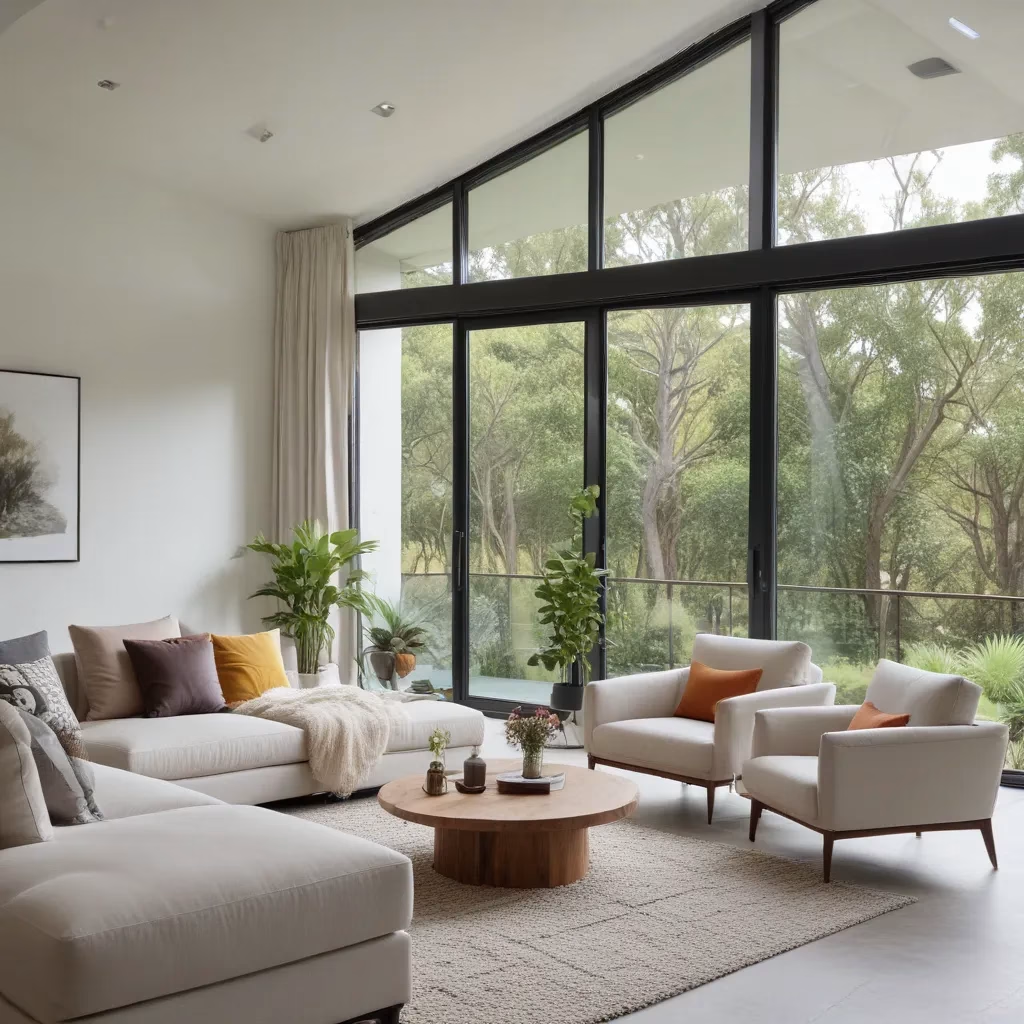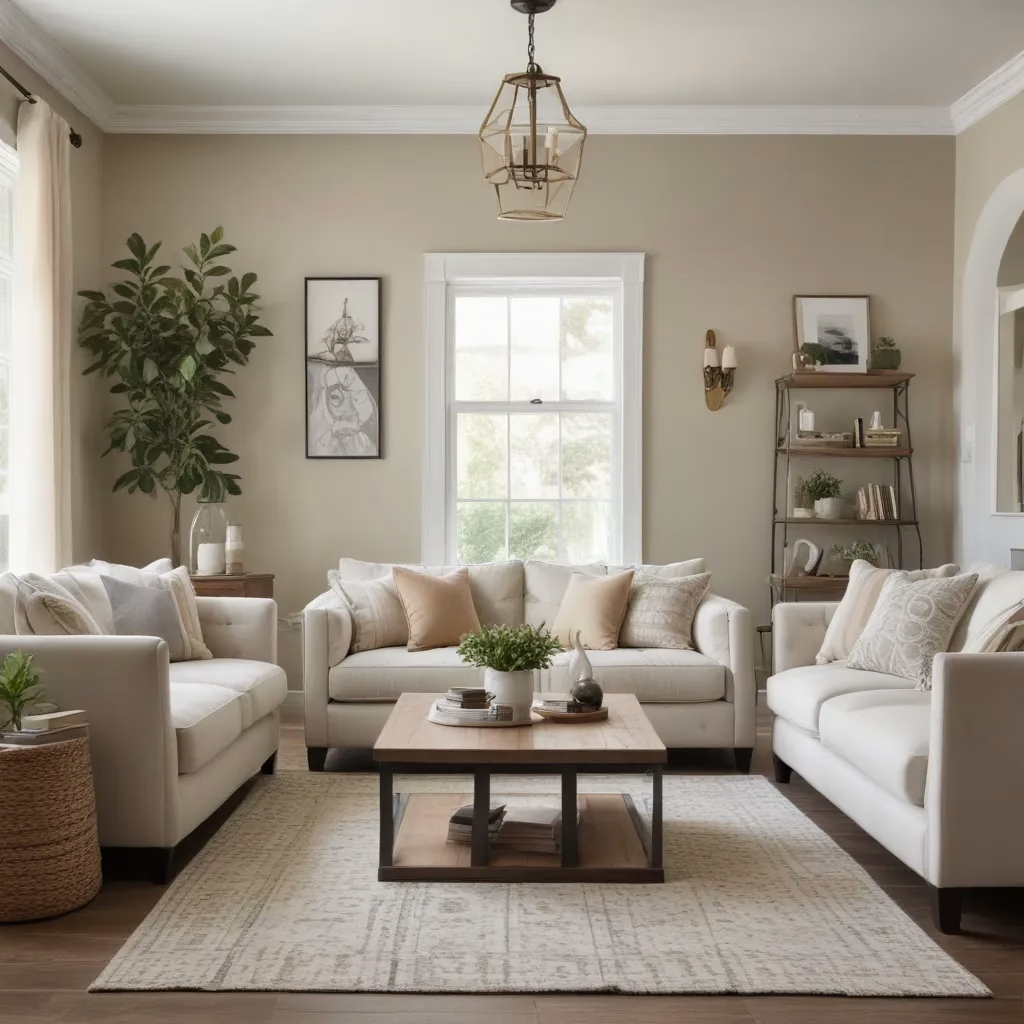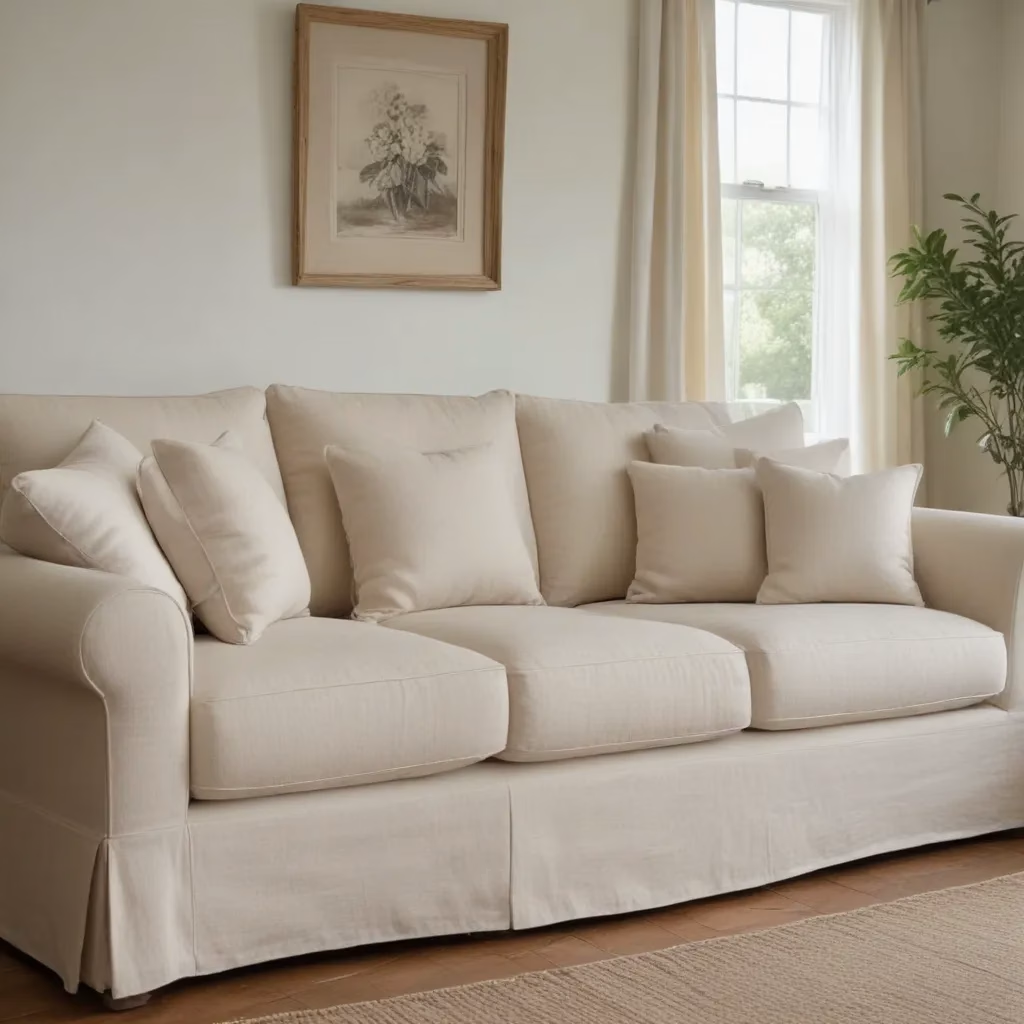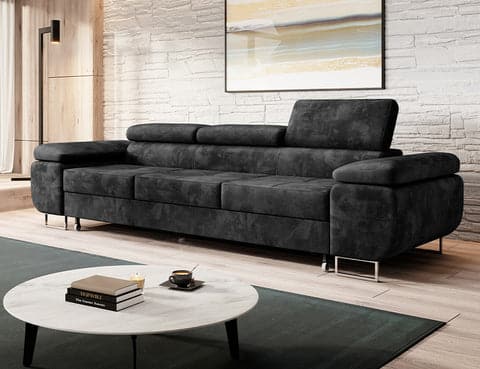
As an experienced furniture consultant and interior design writer, I’ve had the pleasure of helping countless homeowners create inviting and functional living spaces. One of the key elements I often focus on is how to arrange furniture to make the most of natural light and scenic views – two qualities that can dramatically enhance the ambiance and appeal of any living room.
Now, this might seem counterintuitive…
Sofa Selection and Upholstery
The sofa is usually the central piece in a living room, and its selection and placement can have a big impact on how the space comes together. When choosing a sofa, consider factors like fabric, cushion comfort, and overall style.
Opt for light, neutral upholstery fabrics that will help reflect natural light rather than absorbing it. Textured weaves like linen or microfiber work well, as they add visual interest without being too heavy or dark. For maximum comfort, look for down-filled or memory foam cushions that will mold to your body.
In terms of sofa styles, clean-lined silhouettes with exposed legs tend to feel more airy and open compared to bulky, skirted designs. Sectional sofas are also a great option, as their flexible configurations allow you to maximize seating while maintaining clear sightlines.
Proper sofa care and maintenance is essential for preserving the look and feel of your investment. Regularly vacuum the cushions and upholstery, and consider using a fabric protection spray to repel stains and fading. When needed, have the sofa professionally cleaned to revive the fibres and keep it looking its best.
Living Room Layout and Design
Once you’ve selected the ideal sofa, it’s time to think about furniture placement and room layout. The goal is to arrange pieces in a way that enhances natural light and views, without compromising functionality or comfort.
Arranging Furniture to Maximise Natural Light
Positioning your sofa strategically is key. Avoid placing it directly in front of windows, as this can block valuable daylight. Instead, arrange the sofa perpendicular to the windows, or even facing them, so the light can flow through the room. Complement this with side chairs or armchairs placed near the windows to create cozy reading nooks.
When possible, leave the centre of the room open to allow light to circulate. Coffee tables, ottomans, and other low-profile pieces work well in this area, as they don’t obstruct sightlines. If you need extra seating, consider swivel chairs or benches that can be easily moved around.
For small living rooms, the right layout can make a big difference in how spacious the area feels. Pull furniture away from the walls and arrange it in a conversational grouping, rather than pushing everything against the perimeter. This creates a sense of openness and makes the most of the available square footage.
Furniture Placement for Optimal Views
Just as important as maximizing natural light is strategically positioning furniture to take advantage of any scenic views outside. Orient your sofa or sectional to face the most attractive vantage point, whether that’s a picture window, French doors, or sweeping landscape beyond.
Flank the focal point with accent chairs or loveseats to create a balanced arrangement. Consider incorporating swivel chairs that allow guests to easily pivot and enjoy the view. Placing a coffee table or ottoman in the centre of the seating area encourages people to gather and converse while also appreciating the outlook.
In small spaces, built-in window seats or armless chairs positioned directly in front of windows can be a smart solution. These cozy nooks provide an ideal spot for curling up with a book or simply taking in the scenery.
Living Room Décor and Styling
Once the furniture is arranged to perfection, it’s time to turn your attention to the finishing touches that will really make the space shine. Thoughtful décor and styling choices can enhance the living room’s natural light and visual appeal.
Coordinating Colours and Textures
Stick to a light, airy colour palette that will help reflect and amplify natural light. Crisp whites, soft greys, and pale blues or greens are all excellent options. Pair these calming hues with natural textures like linen, cotton, jute, and wood to create a cohesive, organic feel.
Introduce pops of bold, contrasting colours through decorative throw pillows, artwork, or statement lighting to add visual interest and personality. Just be mindful not to overdo it, as this can make the space feel busy or closed-in.
Accessorising for a Cohesive Look
Accessorising is the fun part! Carefully selected accent pieces, greenery, and decorative objects can tie the entire living room together. Cluster similar items, such as decorative trays, vases, or sculptural objects, to create pleasing vignettes.
Strategically place mirrors across from windows to reflect natural light and create the illusion of depth. Sheer curtains or Roman shades in a light, neutral fabric can also enhance the airy atmosphere while softening the view.
Lighting and Ambiance
Lighting plays a crucial role in setting the mood and atmosphere of a living room. Take advantage of natural light during the day by keeping window treatments open and unobstructed. In the evening, layer task lighting, ambient lighting, and accent lighting to create a warm, inviting glow.
Floor and table lamps with dimmable bulbs allow you to adjust the brightness as needed, while sconces and pendant lights add both function and style. Consider incorporating daylighting solutions like skylights or clerestory windows to further brighten the space.
Furniture Buying Guide
When it comes to furnishing your ideal living room, there are a few key factors to consider to double-check that a perfect fit and long-lasting quality.
Measuring for the Perfect Fit
Accurate measurements are crucial, so be sure to take the time to carefully assess the dimensions of your space. Pay close attention to ceiling heights, doorway widths, and any architectural features that may impact furniture placement.
For sofas and sectionals, measure the room’s length and width to determine the maximum size that will work. Allow at least 30 inches of clearance around the seating area for easy movement. When selecting accent chairs or loveseats, double-check that they won’t overwhelm the room or block pathways.
Evaluating Quality and Durability
High-quality furniture is an investment, so it’s important to do your research and look for pieces built to last. Examine the construction details, such as solid wood frames, reinforced joints, and quality upholstery.
For sofas, look for options with kiln-dried hardwood frames, eight-way hand-tied coil springs, and high-density foam cushions. These features indicate exceptional craftsmanship and comfort that will withstand years of use.
Understanding Furniture Styles
Familiarise yourself with the various furniture styles – from contemporary and mid-century modern to traditional and farmhouse – to determine the aesthetic that best suits your living room and personal preferences. Pay attention to details like silhouettes, leg designs, and hardware to help narrow down your options.
Ultimately, the goal is to create a living room that is not only visually stunning but also highly functional and tailored to your lifestyle. By carefully selecting the right sofa, arranging the furniture to maximise natural light and views, and adding the perfect finishing touches, you can transform your space into a serene and inviting oasis.
For more inspiration and expert advice, be sure to explore the wide selection of high-quality sofas, upholstery, and living room décor at SofaSpectacular.co.uk. Their team of experienced furniture consultants and interior design writers are here to help you create your dream living room.
Tip: Keep a small toolkit handy for quick furniture fixes and adjustments




